Sam Lemey
A Comprehensive Overview on UWB Radar: Applications, Standards, Signal Processing Techniques, Datasets, Radio Chips, Trends and Future Research Directions
Feb 08, 2024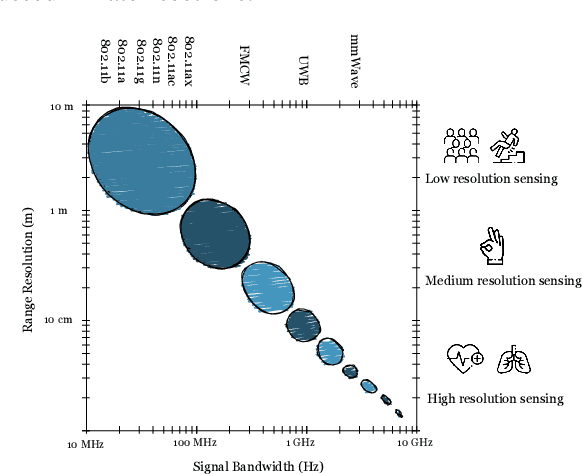
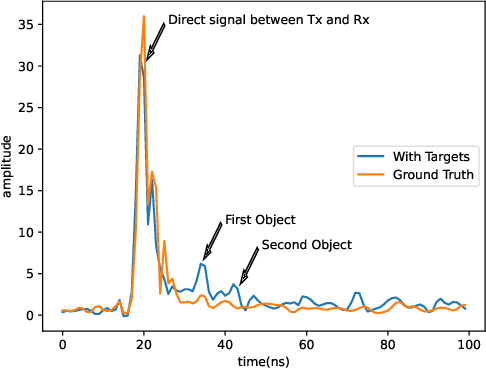
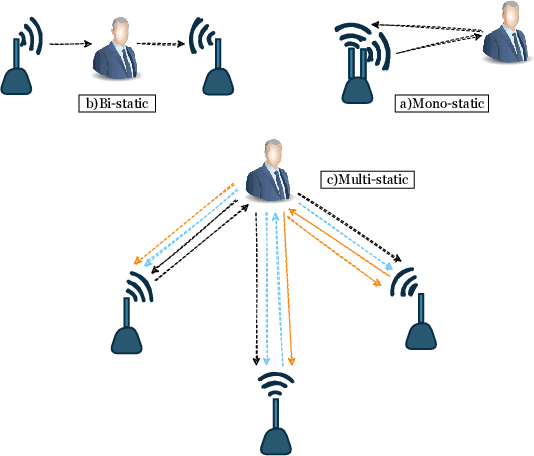
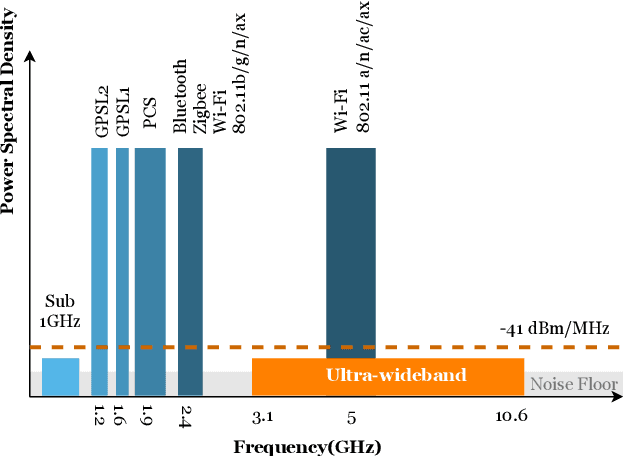
Abstract:Due to their large bandwidth, relatively low cost, and robust performance, UWB radio chips can be used for a wide variety of applications, including localization, communication, and radar. This article offers an exhaustive survey of recent progress in UWB radar technology. The goal of this survey is to provide a comprehensive view of the technical fundamentals and emerging trends in UWB radar. Our analysis is categorized into multiple parts. Firstly, we explore the fundamental concepts of UWB radar technology from a technology and standardization point of view. Secondly, we examine the most relevant UWB applications and use cases, such as device-free localization, activity recognition, presence detection, and vital sign monitoring, discussing each time the bandwidth requirements, processing techniques, algorithms, latest developments, relevant example papers, and trends. Next, we steer readers toward relevant datasets and available radio chipsets. Finally, we discuss ongoing challenges and potential future research avenues. As such, this overview paper is designed to be a cornerstone reference for researchers charting the course of UWB radar technology over the last decade.
An Overview of Ultra-WideBand (UWB) Standards(IEEE 802.15.4, FiRa, Apple): Interoperability Aspects and Future Research Directions
Feb 04, 2022
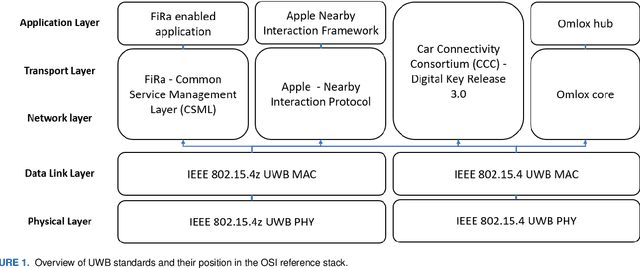


Abstract:The increasing popularity of ultra-wideband (UWB) technology for location-based services such as access control and real-time indoor track\&tracing, as well as UWB support in new consumer devices such as smartphones, has resulted in the availability of multiple new UWB radio chips. However, due to this increase in UWB device availability, the question of which (industry) standards and configuration factors impact UWB interoperability and compatibility becomes increasingly important. In this paper, the fundamentals of UWB compatibility are investigated by first giving an overview of different UWB radio chips on the market. After that, an overview of UWB standards and standardisation entities is given. Next, this overview is used to discuss the focus of these different standards and to identify the differences between them. We describe compatibility issues and associated interoperability aspects related to PHY, MAC, and upper layers. For the PHY layer, compatibility is possible for all UWB chips if the correct settings are configured. For the MAC layer, the implementation of the multiple access scheme as well as the localization technique is mostly proprietary. For the device discovery, several standards are currently being drafted. Finally, future challenges related to UWB interoperability are discussed.
 Add to Chrome
Add to Chrome Add to Firefox
Add to Firefox Add to Edge
Add to Edge